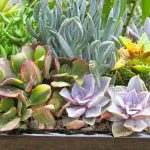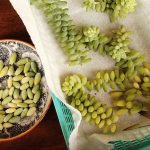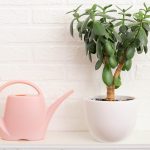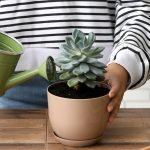Delve into the world of succulents, beloved for their lush foliage and easy care. However, these plants can suffer due to improper watering. Overwatering leads to rot, while underwatering causes shriveling. To ensure your succulents thrive, learn about the ideal watering frequency and volume.
Cacti & Succulents
Mastering Succulent Watering: The Ultimate Guide
Exploring a diverse array of species with fleshy, juicy leaves, succulents showcase adaptability to arid environments. Originating from deserts and rocky landscapes, these plants evolved to retain water from infrequent rainfall. While categorization lacks precision, all succulents share a need for minimal watering.
Understanding Succulents
Embracing their water-storing tissues, succulents possess resilience in harsh conditions. Their name derives from the Latin term for sap or juice. While predominantly found in deserts, some species thrive in mountainous terrains with sparse rainfall, showcasing their ability to withstand drought.
Watering Frequency
Contrary to popular belief, succulents do not crave constant hydration. Thriving in dry soil thanks to their leaf moisture reserves, these plants require infrequent watering. The ideal schedule varies per species, influenced by factors such as leaf thickness and plant size.
Assessing your succulent’s leaves provides insight into their water needs. Thicker leaves signify enhanced water storage, necessitating less frequent irrigation. Plant size also affects watering frequency, with larger specimens enduring longer periods without moisture.
To determine water readiness, check soil moisture levels and lift the container. When the soil is completely dry and the pot feels light, it’s time to water. When in doubt, delay watering as succulents can endure drought but are vulnerable to excess moisture.
Watering Volume


Concerning succulents, proper watering can be overlooked due to their low water requirements. To avoid mistakes in watering these plants, some tend to only lightly sprinkle the top layer of soil when potted in containers, resulting in roots not getting enough moisture which causes underwatering issues.
An important aspect of watering succulents is ensuring deep and even watering, allowing roots to fully absorb moisture. Underwatering can lead to growth problems as the plant seeks moisture on the surface, creating a misconception that the plant is adequately watered despite the lower soil layers being dry.
Native succulents receive infrequent but heavy rain, saturating the soil and enabling roots to absorb necessary moisture. With well-draining soil, excess water drains quickly, keeping the roots dry. To mimic this, water deeply until excess water flows out of drainage holes, preventing overwatering in suitable conditions.
Watering should focus on saturating all areas equally to avoid uneven root growth caused by favoring specific sides. This helps plants thrive with consistent moisture distribution throughout.
Impacts of Environment on Watering Schedules
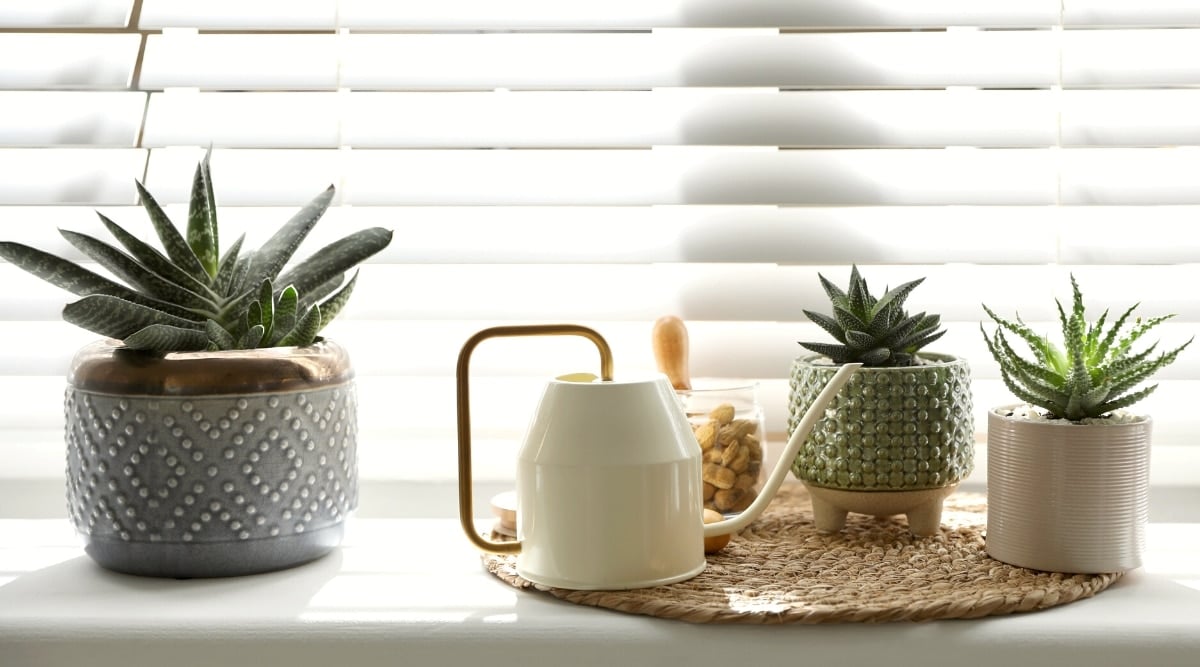

Beyond plant variety and size, the environment’s influence on soil moisture levels dictates watering intervals. Sunlight exposure is a primary factor, with full sun increasing soil evaporation rates. Indoor succulents in lower light conditions require less frequent watering.
Temperature fluctuations and seasonal changes also affect watering needs: warmth accelerates evaporation while winter dormancy reduces water demand. Assessing these environmental factors guides adjustments in watering schedules to maintain plant health.
Identifying Underwatering Symptoms in Succulents


Indicating water deficiency takes time in succulents. Prolonged dry soil results in visible leaf issues, starting with small wrinkles progressing to leaf shrinkage as moisture reserves deplete, requiring timely watering to revive the plant’s health.
When it comes to succulents, their leaves may undergo a color change and eventually crisp up before falling off the main plant completely.
If you spot yellowing or browning leaves alongside dry, compacted soil, chances are you’ve underwatered your succulent. To remedy this, quickly saturate the soil to revive the leaves within a couple of hours.
To prevent overcompensating with excessive watering in the future, make it a habit to check the soil more frequently. Only water your succulents when the soil has just dried out to avoid underwatering issues.
Overwatering poses a more severe threat to these delicate plants. This issue typically arises from watering too soon or inadequate drainage in the container or soil.
An overwatered succulent will exhibit soft, mushy leaves compared to the usual fleshy and robust texture. Leaves may also lose their vibrancy, turning yellow, translucent, or even black as the problem progresses. Eventually, affected leaves will start dropping off the plant, leaving behind a decaying stem.
To prevent this common succulent killer, focus on enhancing drainage and refrain from watering until the soil is completely dry.
In conclusion, mastering the art of succulent watering requires an understanding of their unique needs compared to traditional garden plants. Always check the soil before watering and allow it to dry out entirely before considering the next watering session. By following these guidelines, your succulents will thrive and be much happier than if they were overwatered.

